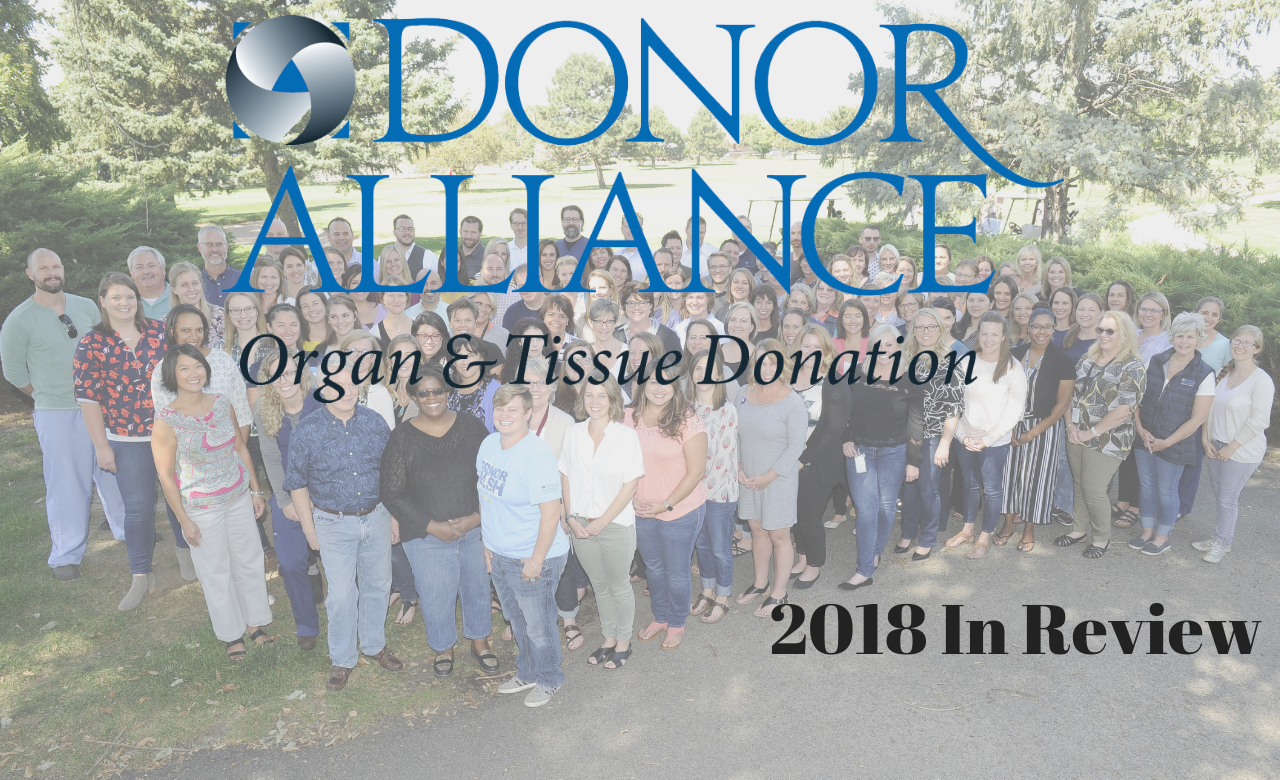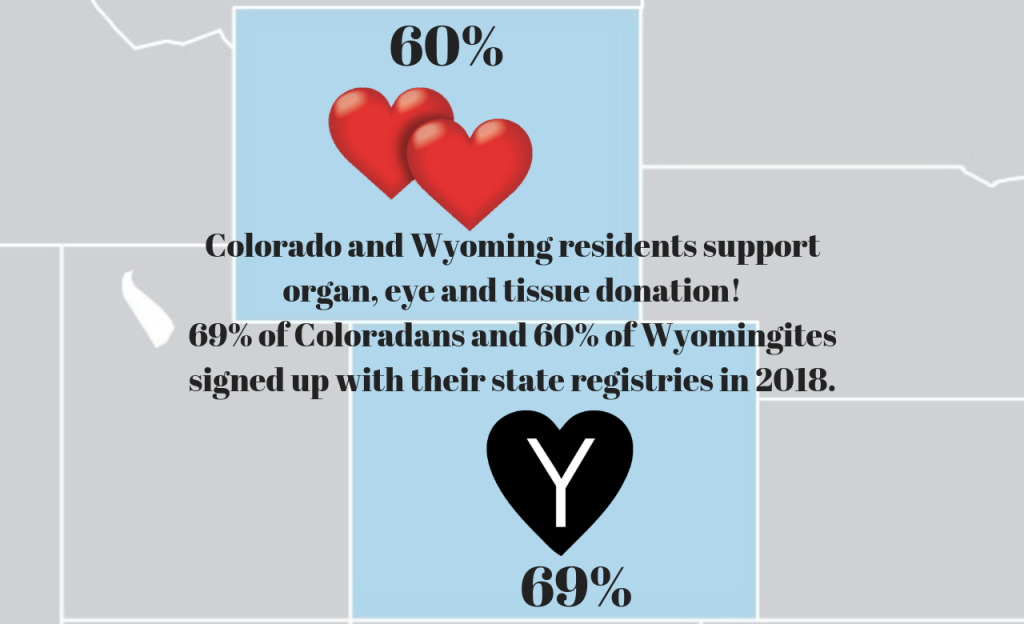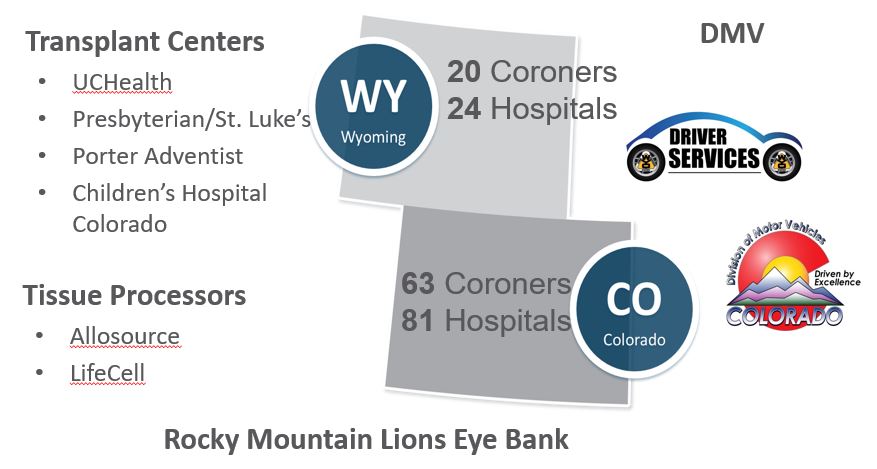Cobertura Reciente en los Medios
Donation 101: Focus on Relationships
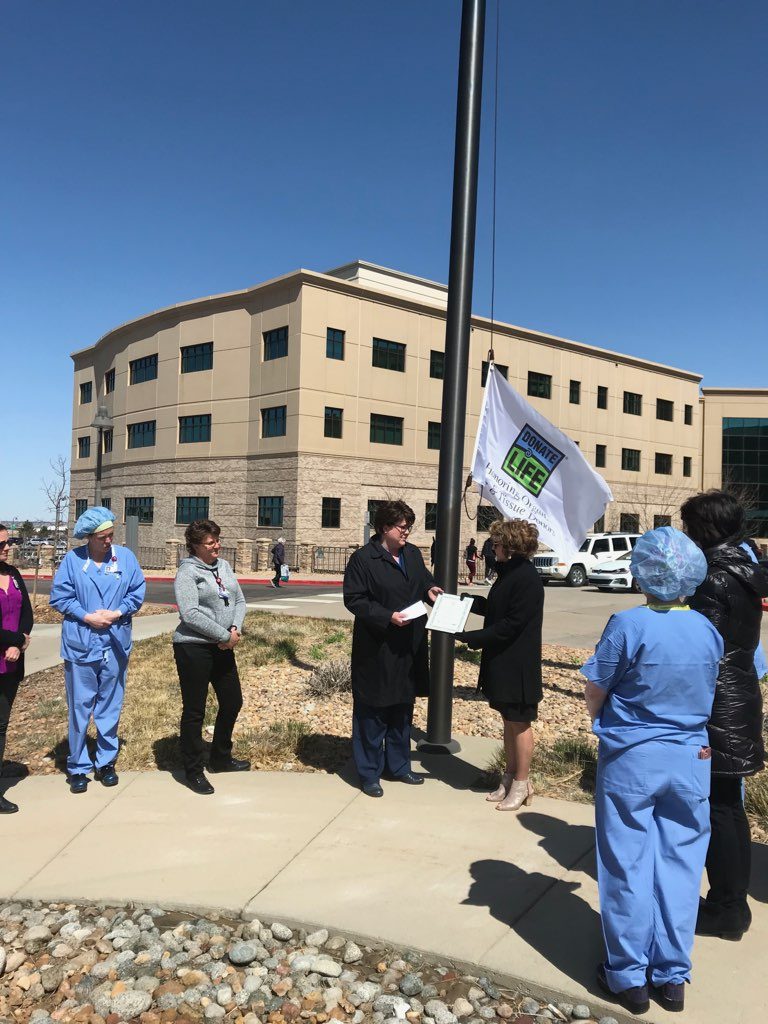
Throughout April, our team of Donation Consultants will be coordinating a variety of hospital activities in celebration of National Donate Life Month. Some of these events include flag raising ceremonies to honor organ and tissue donors and illumination displays to raise donation awareness. Through critical care rounds, lunch and learns, hospital leadership presentations, and donation booths, we will share stories that highlight the lifesaving and healing gifts of organ and tissue donation.
Through the continued collaboration with our hospital partners, and generosity from our donors and their families, we’re able to work towards achieving our mission, to save lives through organ and tissue donation and transplantation, every day. Last year, we recovered a record number of organs and tissues for transplantation! Our hospital development team recognizes that donation does not happen in a vacuum. Our relationships with hospitals, coroners, funeral homes, and other key partners in the donation process makes the critical difference!
We hope to see you at o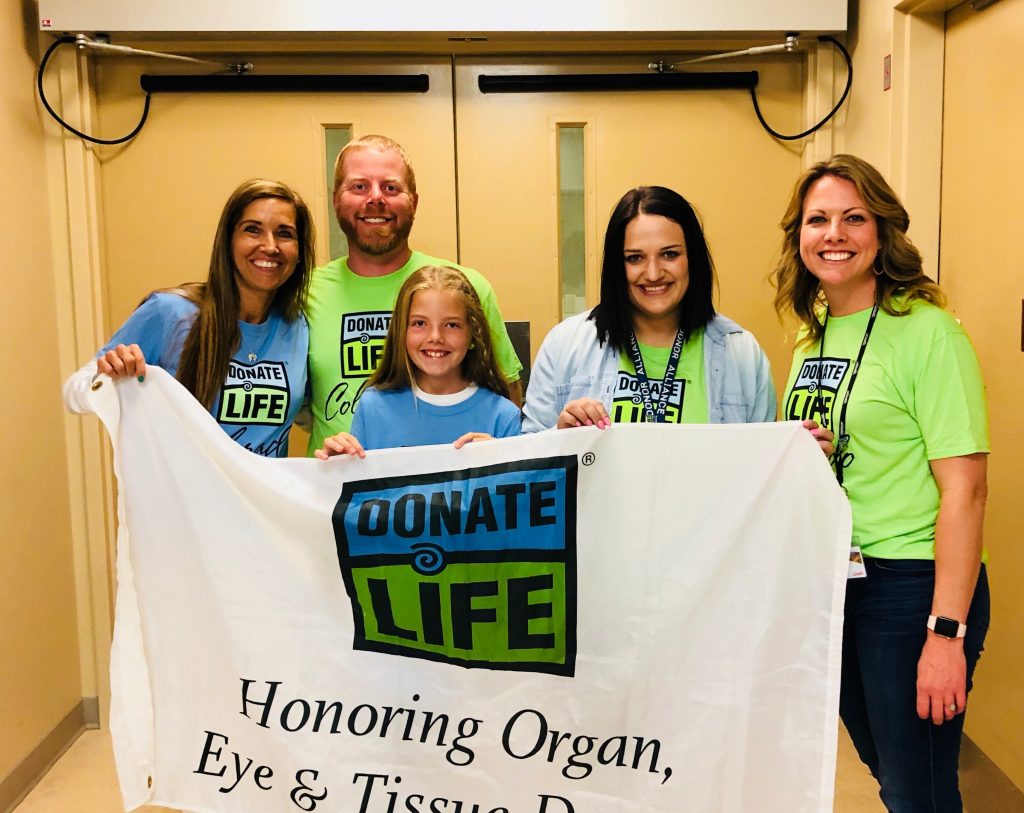 ur donation awareness events. Please stop by to say hello! To find out more about events planned in your hospital contact your local Donation Consultant, visit our events page or send an email to Kim Robuck at krobuck@donoralliance.org.
ur donation awareness events. Please stop by to say hello! To find out more about events planned in your hospital contact your local Donation Consultant, visit our events page or send an email to Kim Robuck at krobuck@donoralliance.org.
National Kidney Month: The Importance of Donation
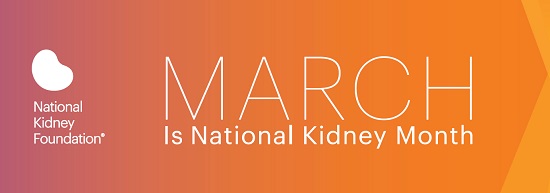
In honor of National Kidney Month this March, we're reminding Colorado and Wyoming residents to think about the health of their kidneys and urge all residents to sign up as organ, eye and tissue donors.
Kidney Disease:
Did you know that 90% of those with kidney disease don’t even know they have it? Kidneys work as the body’s chemical purifier, filtering waste from 150 quarts of blood a day and performing vital functions that help direct red blood cell production and regulate blood pressure. Over time, the kidneys can become damaged with little or no physical symptoms.
According to the National Kidney Foundation, roughly 30 million Americans suffer from kidney disease.
Taking Care of Your Kidneys:
According to the National Kidney Foundation (NKF), one in three Americans are at-risk for kidney disease. As mentioned above, since many don't know they have kidney disease, NKF has created a quiz to see if you're at risk.
Early diagnosis is key, so make sure to visit your doctor once a year; general health screenings monitor for kidney function. There are also a few simple steps you can take to help protect your kidneys, including reducing the amount of processed foods in your diet, exercising regularly and staying hydrated.
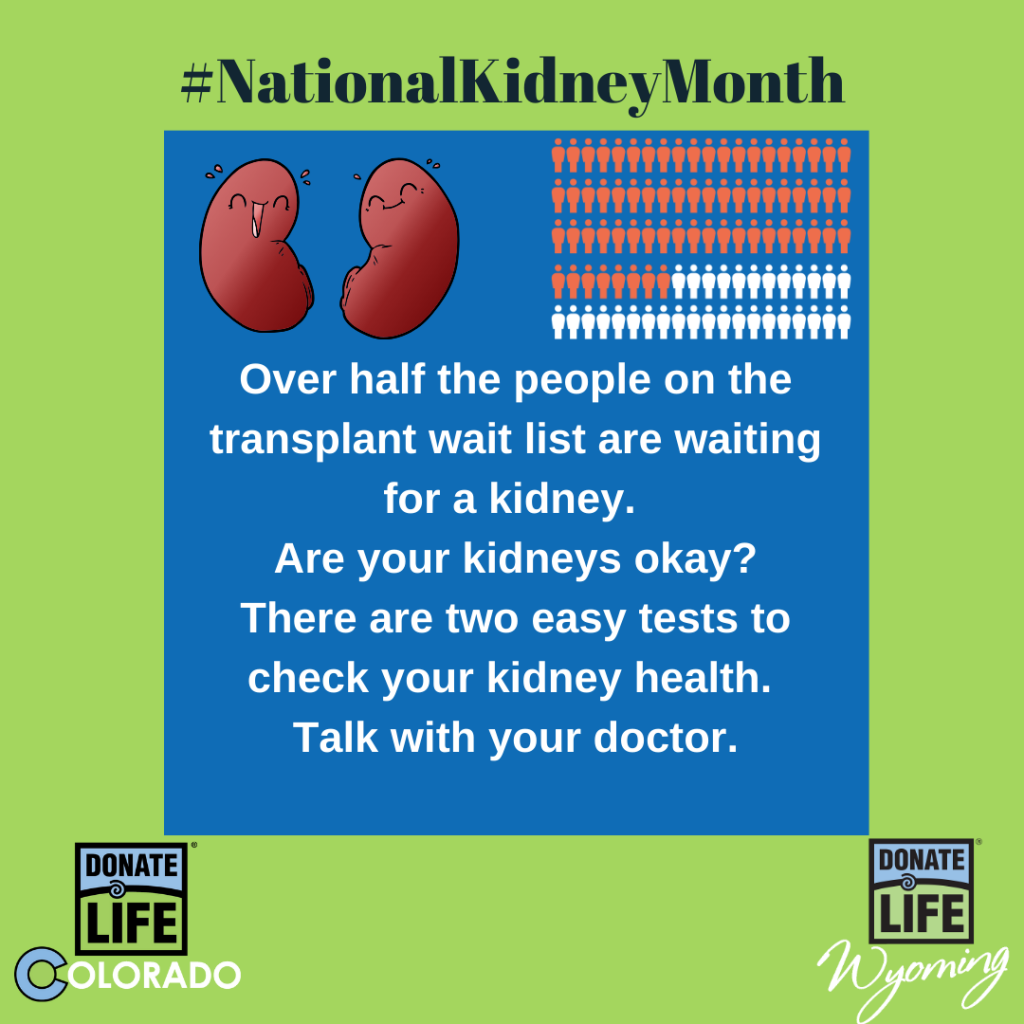 Local Stats/Facts:
Local Stats/Facts:
In Colorado and Wyoming, there are nearly 2,000 people on the waiting list for lifesaving organ transplants – and more than 80% of them are awaiting a kidney. Kidneys are the most transplanted organ and the average time a patient spends on the waiting list is 3-5 years. Kidneys are one of several organs that a living donor can give – allowing folks that are able to be a living donor to make a huge impact through organ donation while they are still alive.
For more information on living donation, click here.
Remember, while not everyone can be a living donor, everyone CAN sign up to be an organ, eye and tissue donor after death. Sign up anytime online at Donate Life Colorado or Donate Life Wyoming.
Does my religion support organ, eye and tissue donation?
Have you ever wondered what your religion says about donation and transplantation? No doubt, this is one of the questions that often comes up when discussing donation and transplantation. The good news is that all major religions support organ, eye and tissue donation, and see it as an act of compassion and love.
In fact, many religions have made statements addressing donation and transplantation. Some religions openly support organ, eye and tissue donation and encourage their followers to consider “paying it forward” by giving the gift of life. Other religions leave the decision to the individual.
Here are two easy ways for you to learn more about your faith’s view on organ, eye and tissue donation:
- Become familiar with your faith’s doctrine
Most people are not aware of their faith’s position regarding organ and tissue donation. Becoming familiar with your faith’s perspective on organ, eye and tissue donation after death will help clear up some of your questions and concerns. You can visit our Faith and Donation page to read statements made by different faith leaders addressing donation and transplantation. These resources include statements made by most religions practiced in the United States.
- Discuss donation and transplantation with your leaders
Another way for you to learn how donation and transplantation is viewed by your faith is to talk to your leaders. By discussing organ, eye and tissue donation with your faith leaders and addressing specific questions, you’ll have a better understanding of your faith’s traditions, ceremonial requirements, and how these are or can be compatible with donation and transplantation. Being informed can provide additional assurance and peace of mind when making the decision to become a donor.
The need for transplantable organs and tissues affects people from all backgrounds regardless of age, race or religion. You have the ability to leave a legacy of love through organ, eye and tissue donation and save lives. You can sign-up anytime online at Donate Life Colorado or Donate Life Wyoming. Remember, once you’ve signed up, share your decision with your loved ones.
Frequently Asked Student Questions
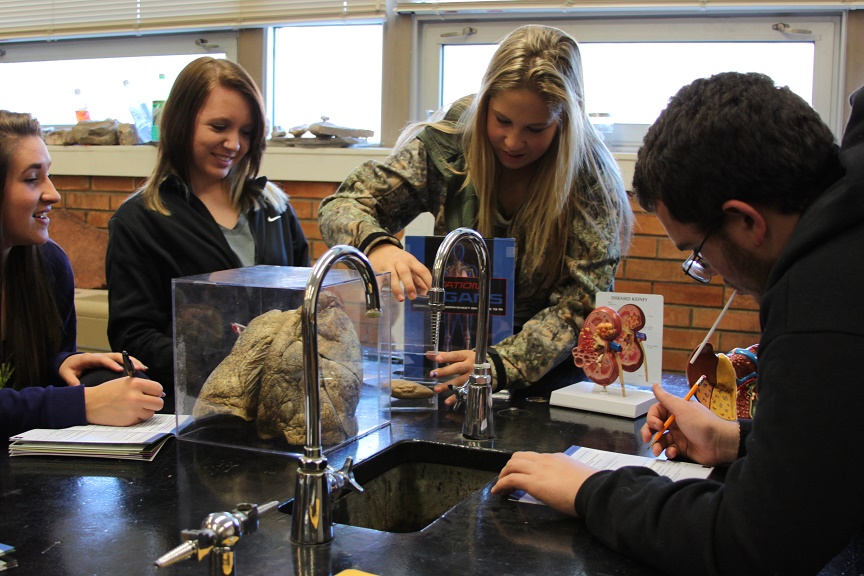 Through Transplantation Science, an award-winning, free program for 7th through 12th graders, many thousands of students throughout Colorado and Wyoming are able to get new perspective on organ, eye and tissue donation. The 50-90 minute workshops at schools throughout the region, aim to give students a better understanding of what it means to be a registered organ, eye and tissue donor and how transplantation works.
Through Transplantation Science, an award-winning, free program for 7th through 12th graders, many thousands of students throughout Colorado and Wyoming are able to get new perspective on organ, eye and tissue donation. The 50-90 minute workshops at schools throughout the region, aim to give students a better understanding of what it means to be a registered organ, eye and tissue donor and how transplantation works.
During and after these sessions, our educators receive a number of great questions from students. You have probably had similar questions! Checkout the most frequently asked questions and their answers below. If you have a question about organ and tissue donation that is not answered here, review the full FAQs on the Donate Life Colorado or Donate Life Wyoming registry websites.
Does the family get to meet who they’re donating to?
Sometimes. Soon after donation occurs, the family of a donor will be given general non-identifying information about their loved one’s recipient(s), including age, gender, region of residence, and hobbies/interests. Donor families and recipients may correspond with each other at any time, and this process is facilitated by Donor Alliance and transplant centers in a way that ensures donor and recipient confidentiality. If correspondence continues over time—and both parties agree—they may begin to communicate directly. Some go on to meet each other in person, while others may be more comfortable communicating without direct contact. It is also possible that either party may decline to correspond or meet for various reasons. To learn more about process, visit our corresponding with recipients FAQ.
How does donation impact the donor’s family?
Every family deals with grief differently. However, many families find that donation creates something positive out of one of the most difficult moments of their lives. To read more about how donation has touched some of the lives of donor family members, visit our Donor Family Stories page.
How do the doctors feel in that situation?
This is a personal question dependent on each doctor, and one that we are not able to answer. What we can tell you is, the doctors who care for a patient in the hospital are not associated with the doctors who perform the recovery and transplant surgeries on donors. Medical professionals always try all lifesaving measures and death is declared prior to and independent of donation.
How does the life of the donor change after donating their organs or tissues?
The majority of transplanted organs are provided by deceased donors. However, about 25 percent of organs provided for transplant in Colorado are provided by living donors, or people who donate one of their kidneys or a piece of their liver to someone else. Although living donation requires major surgery—and all major surgery comes with some risks—the vast majority of living donors go on to live a full and active life, with no complications from surgery. It is important to note that signing up on the Donate Life Colorado/Wyoming Organ & Tissue Donor Registry does not pertain to living donation, only to donation after death. Learn more about what you are committing to when you say Yes at the DMV here.
How can I help besides by being a donor?
There are a number of ways to help beyond registering to be a donor.
- #StartTheConversation: Most importantly, we encourage you to talk to your family about your decision regarding donation. Whether someone is signed up or not, it is tremendously helpful for the grieving family when they know what their loved one wanted.
- Volunteer: You may also consider volunteering. We have many events that we staff with our volunteer program, Advocates for Life. The focus of this program is to educate the public about what organ and tissue donation is so that they are able to make an educated decision about being a donor.
- Donate Life Materials & Observances: At our community events, Transplantation Science classes, and local DMV locations, you can get a Donate Life item to showcase your support. In Colorado, consider raising awareness for organ and tissue donation every day by getting a Donate Life license plate at the DMV. We celebrate national observances in our local communities and you can join in on the fun too! Check out the upcoming events and observances in your area.
- Living Donation: Last but certainly not least, consider a living donation. Learn more about living donation here. Remember not everyone can be a living donor, but anyone can sign up to be an organ, eye and tissue donor after death.
What advances have been made through organ transplants?
As in any medical field, there are constant advances and innovation in organ donation and transplantation. We encourage you to do additional research for information on this topic, and choose sites that come from reputable medical resources.
Can you provide any information about the people whose organs students see in Transplantation Science sessions? 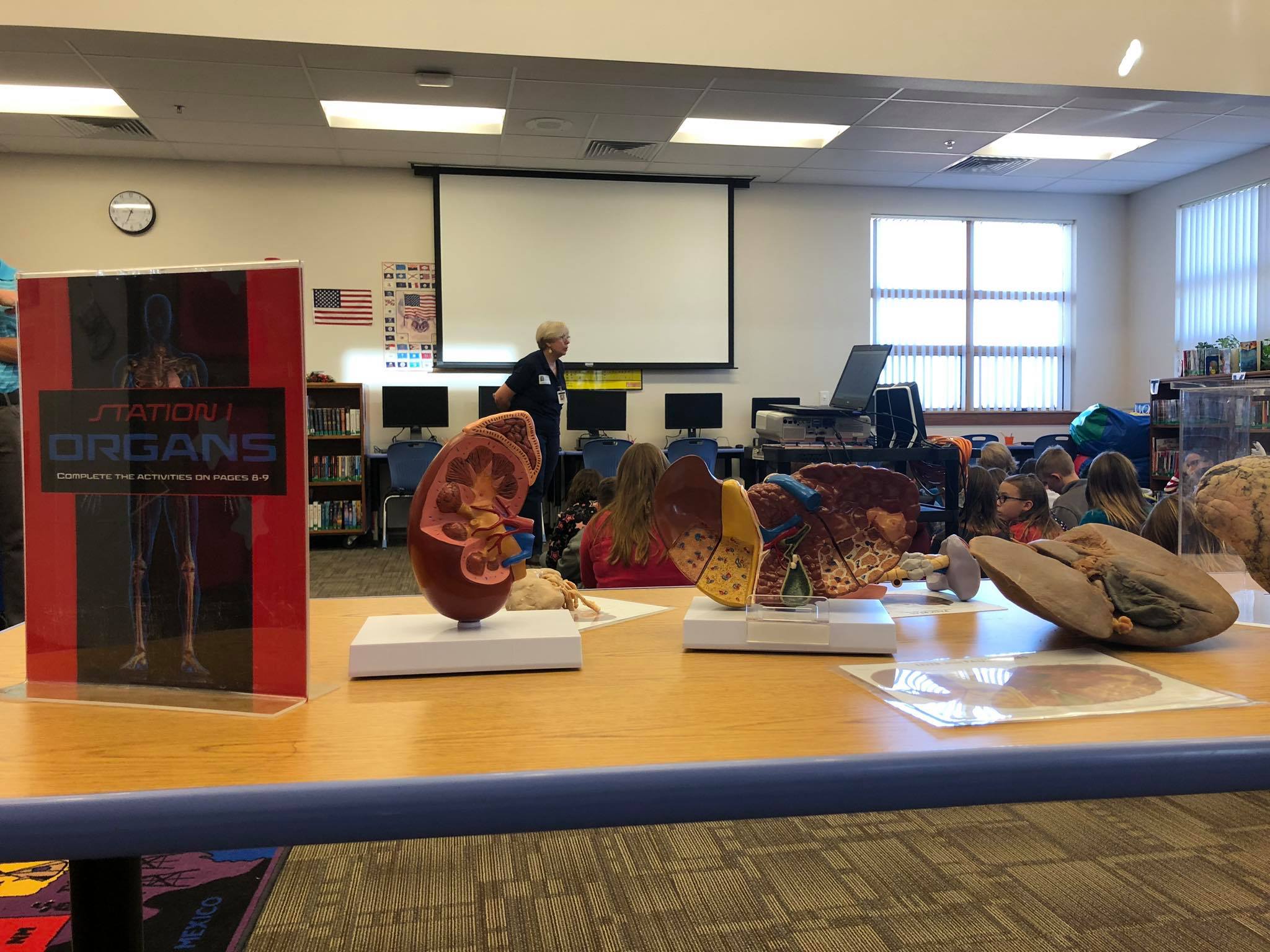
In order to protect the families of the donors whose organs are available for our Transplantation Science program, we are given limited information. The information that your educator gave you included all of the details that we have. The important thing to remember is that those donors were people who decided to donate their organs for educational learning.
What happens to the donor after all of the organs and tissues to be donated have been recovered?
Our donors and their families are treated with great care and respect throughout the entire donation process. Following the recovery of organs and tissues from the donor, the donors are returned in a presentable state to their families, often via funeral homes or services. It is the family’s responsibility to make arrangements with a funeral home. Donor Alliance is not involved in the decision-making process when selecting a funeral home, but will work closely with the staff of the funeral home of choice or the coroners to coordinate where the donor will go post recovery.
How do autopsies affect organ and tissue donation?
Autopsies do not prevent organ and tissue donation. Donor Alliance coordinates closely with the coroner’s office to make sure that donation does not interfere with death investigations. If the coroner is aware that it was the wish of the deceased and/or their family to be an organ and tissue donor, they will work to perform an autopsy within a time period that allows for donation.
Thank you to all of the students who continue to share their questions and comments with us! Organ and tissue donation and transplantation can be difficult to understand and talk about, but it is important to ask questions when you don’t understand something. We continue to be grateful to all of the schools and teachers requesting Transplantation Science to help their students gain a better understanding of donation and transplantation.
To learn more about Transplantation Science and schedule your FREE class today, click here.
Living Donation: How Can I Help?
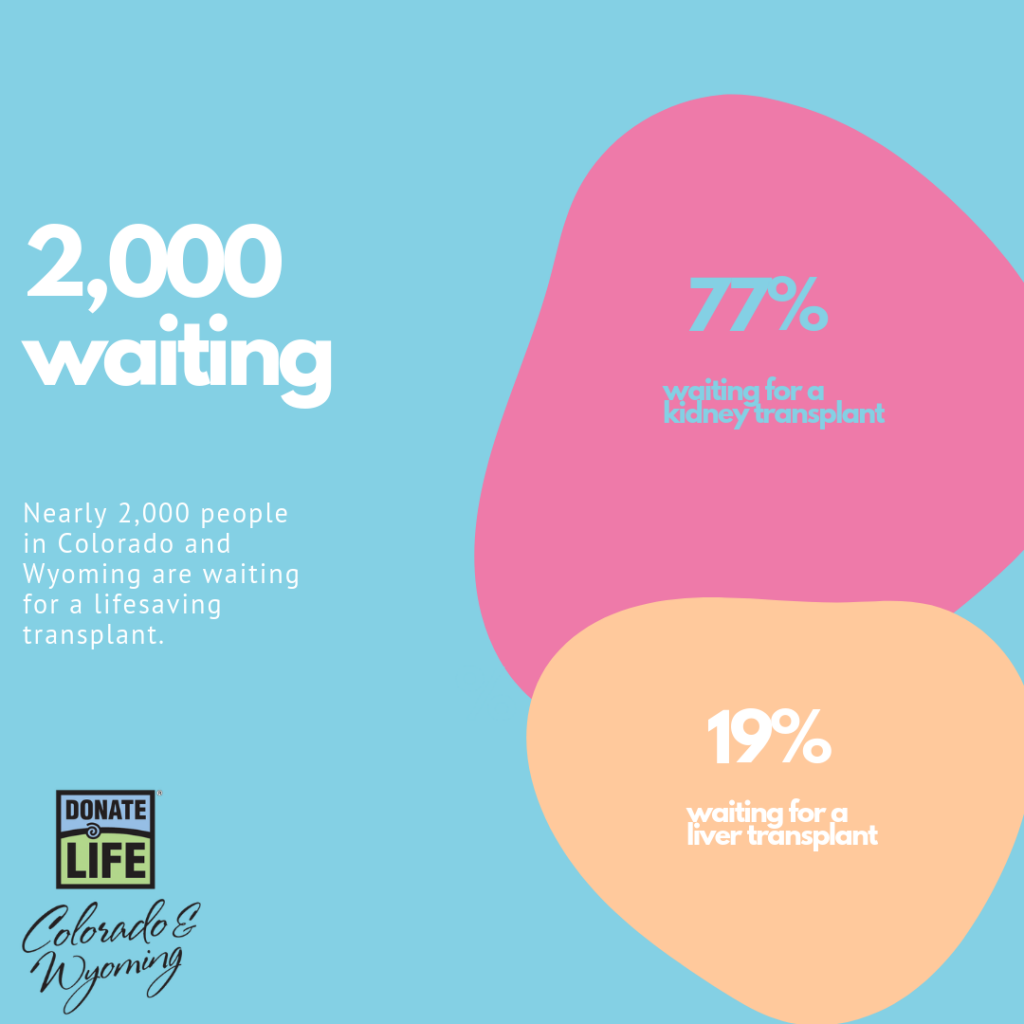
Nearly 2,000 Colorado and Wyoming residents are waiting on a lifesaving transplant. While Donor Alliance works exclusively with deceased donors and their families, living donation is another way people can help save lives and spare many of the individuals on the transplant list from what can be a lengthy wait.
Local Need:
Of those in Colorado and Wyoming waiting for a transplant, more than 1,400 are in need of a kidney and just over 350 are waiting on a liver, both of which can be donated by living donors.
There are four transplant centers within our region that work with living donors: Porter Adventist Hospital, Presbyterian/St. Luke’s Medical Center, Children’s Hospital Colorado and University of Colorado Hospital.
Three Ways Living Donors Can Help:
1.) The most common type of living donation is called directed donation. In a directed donation, the donor names the specific person to receive the transplant, whom is often a family member, friend, coworker or acquaintance.
2.) Some people wish to be a living donor even though they do not personally know someone in need of a transplant. This is known as a non-directed donation. In a non-directed donation, the match is arranged based on medical compatibility with a patient in need.
3.) A third living donation option is called paired exchange. When blood tests reveal that a donor is not compatible for a directed donation with their intended recipient, both the donor and recipient may choose to exchange or “trade” with another incompatible donor-recipient pair. A living donor advocate can discuss this option with donors and recipients if they are not a match.
[caption id="attachment_15909" align="aligncenter" width="300"]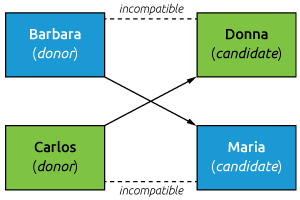 Source: UNOS[/caption]
Source: UNOS[/caption]
2018 Living Donation Stats:
According to the United Network for Organ Sharing (UNOS), there were nearly 6,900 living donor transplants in 2018 - the most since 2005, increasing 11 percent over 2017!
[caption id="attachment_21111" align="aligncenter" width="472"]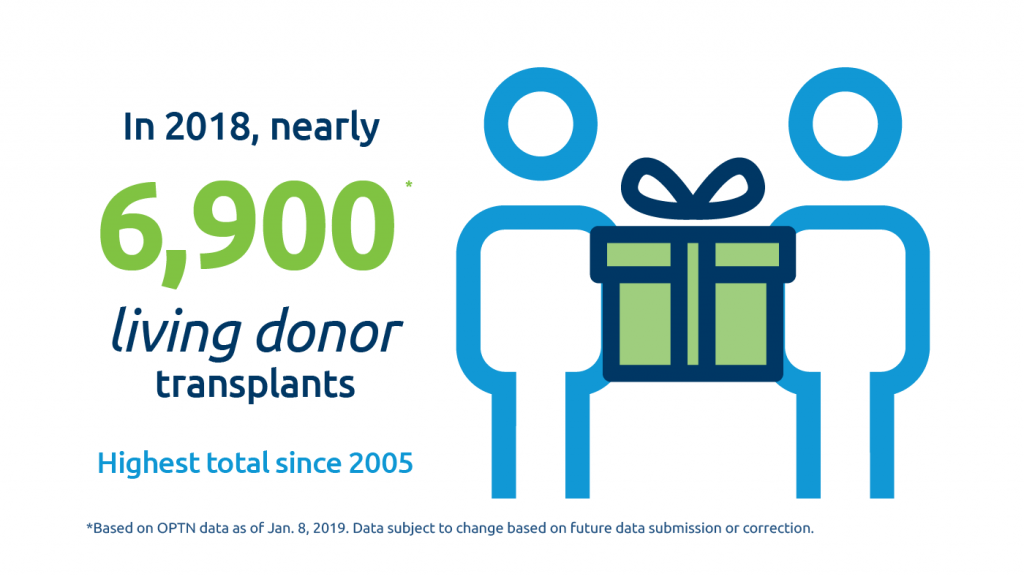 Source: UNOS[/caption]
Source: UNOS[/caption]
Learn more about living donation, here or contact your local transplant center.
Remember, while not everyone can be a living donor, everyone CAN be a donor after death. To sign up to be an organ, eye and tissue donor after death, visit your state registry website, DonateLifeColorado.org or DonateLifeWyoming,org.
Advocates for Life Recognized at Volunteer Appreciation Breakfast
Every year Donor Alliance celebrates our Advocates for Life and all of their efforts at a Volunteer Appreciation Breakfast. This year, more than 150 advocates and their family members attended the breakfast at the Denver Zoo for a morning filled with food, awards, prizes and catching up… followed by an afternoon of walking through the Zoo!
About our Advocates:
Our Advocates for Life put in over a thousand volunteer hours every year helping us out at hundreds of events throughout Colorado and Wyoming. Advocates for Life help with everything from running an information table at a small event, to speaking at a larger event, to helping out in our office, to even sewing together quilts for donor families. We have a hearty group of talented, committed volunteers that truly help Donor Alliance accomplish their mission of saving lives through organ, eye and tissue donation.
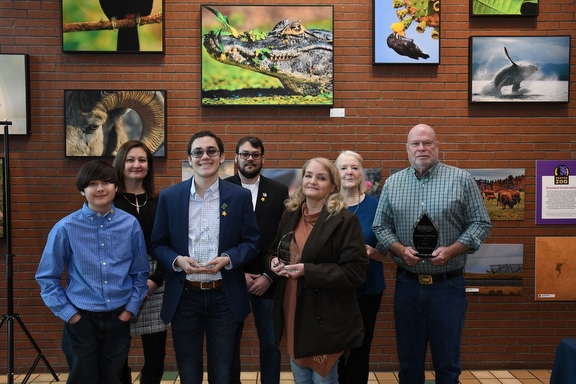
Our Advocates for Life program is comprised of donor family members, transplant recipients, transplant candidates, living donors and others who are passionate about supporting organ, eye and tissue donation and transplantation. Donor Alliance Advocates are the heart and soul of our efforts to inspire the public about the importance of signing up to be an organ, eye and tissue donor in Colorado and Wyoming. So, on Saturday, February 9th, we celebrated them and all they do for us!
Advocate Awards:
Every year we recognize a handful of volunteers that went above and beyond for that year!
For their outstanding work in 2018, we recognized the following:
- Advocate of the Year: Randy Schrantz
- Most Volunteer Hours: Donor Family Quilt Project: Elaine McFarlane, Cheryl Walters, Marilyn Anderson & D’Anne VanGilder.
- Rookie of the Year: Stephanie Burnett
- Uniting Communities: The Tellez Family
Get Involved!
Have a connection to donation and transplantation? Are you a supporter of the cause? We’d love to have you join our Advocates for Life Program. Click here to get started!
[video width="1800" height="944" mp4="https://www.donoralliance.org/wp-content/uploads/2019/02/Volunteer-Appreciation-Breakfast.mp4"][/video]
Donación de Órganos y Tejidos: Como Iniciar la Conversación
¿Has hablado con tu familia sobre tu decisión de ser donante de órganos, ojos y tejidos? Iniciar la conversación sobre este tema puede ser un tanto difícil. Es por eso que te presentamos algunos consejos para ayudarte a hablar sobre este tema y compartir tu decisión con tus seres queridos. 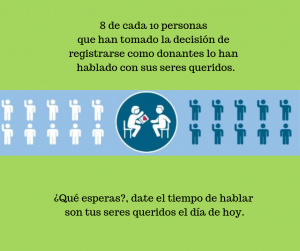
Primero que nada, ¿Qué significa registrarse como donante de órganos, ojos y tejidos?
Registrarse como donante de órganos, ojos y tejidos significa que has tomado la decisión de donar tus órganos y tejidos en el momento de tu muerte. Es muy importante compartir tu decisión de ser un donante con tu familia, ya que tu decisión tendrá prioridad sobre las preferencias de su familia.
Tomar la decisión de registrarse como donante y compartir tu decisión con tu familia los libera de tener que tomar esa decisión cuando tu ya no estes aquí, lo cual puede ayudarlos durante esos momentos tan difíciles. Ademas, hablar sobre la donación con tus seres queridos les ayudará a sentirse seguros y preparados cuando se les presente la información sobre el proceso de donación. ¡Así que #InicialaConversacion hoy y comparte tu decisión heroica de salvar y sanar vidas con tus seres queridos!
Aquí hay algunos consejos para ayudarte a iniciar la conversación:
- UTILIZA TU LICENCIA DE CONDUCIR O ID
¡Tu licencia de conducir o identificación es un excelente inicio de conversación! Verifique si el símbolo de designación de donante (un corazón en escala de grises con una "Y" para Colorado y dos corazones rojos para Wyoming) está en tu licencia o identificación. Puedes hablar con tu familia sobre lo que significa el símbolo en tu licencia y preguntarles si ellos tabien tienen uno. Aprovecha y pideles que compartan contigo cuál es su decisión y por qué.
- COMPARTE UNA HISTORIA SOBRE LA DONACIÓN
¿Conoces a una persona que recibió un trasplante o a una familia de donantes? La donación de órganos, ojos y tejidos toca a miles de personas en nuestra comunidad cada año. Comparte una historia sobre alguien que tomó la decisión heroica de ser donante y, como resultado, su decisión salvó la vida de una persona. Puedes encontrar historias locales de Colorado aquí y de Wyoming aquí.
- INFORMATE Y COMPARTE
Un solo donante puede salvar hasta ocho vidas a través de la donación de órganos y salvar y sanar a más de 75 vidas a través de la donación de tejidos. En nuestra comunidad hay casi 500 hispanos esperando un trasplante de órganos que les salve la vida. Informate sobre la donación de órganos y tejidos y comparte tu conocimiento con tus seres queridos.
Inicia la conversación este Día Nacional del Donante, celebrado el 14 de febrero de cada año. Esta fecha brinda una oportunidad perfecta para compartir el amor al registrarse como donante de órganos, ojos y tejidos y luego compartir tu decisión con tu familia. Comparte tu decisión en las redes sociales con #IniciaLaConversacion y e invita a otros a hacer lo mismo. Recuerda que puedes registarte como donante en cualquier momento en línea en Done Vida Colorado.
How to Start the Conversation on National Donor Day
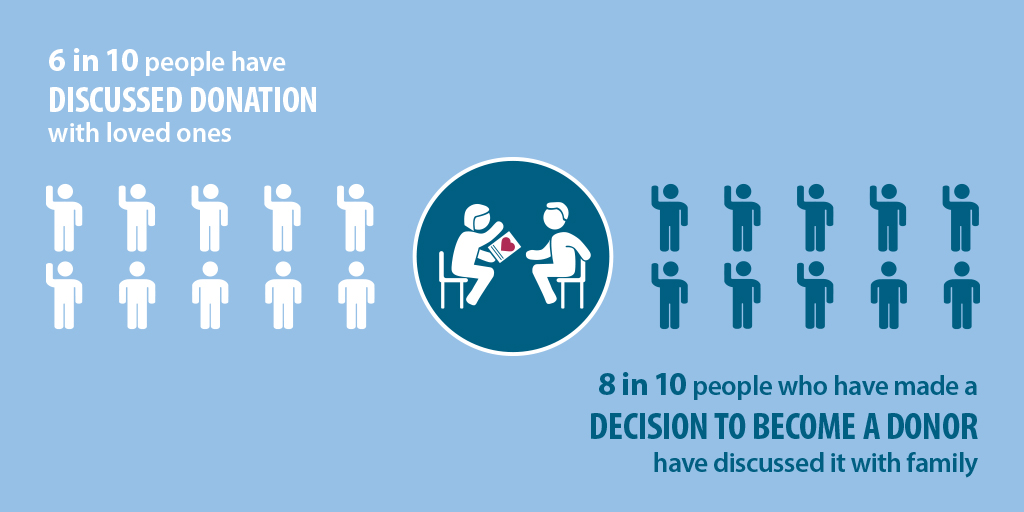 Have you talked with your family about your decision to be an organ, eye and tissue donor? It can be difficult to start the conversation. We have a few tips to help you share your decision with your loved ones on National Donor Day.
Have you talked with your family about your decision to be an organ, eye and tissue donor? It can be difficult to start the conversation. We have a few tips to help you share your decision with your loved ones on National Donor Day.
Signing up as an organ, eye and tissue donor means you have made the decision to donate your organs and tissues at the time of your death. It is important to discuss your decision with your family as it will take priority over your family’s preferences.
Making the decision for yourself in advance makes it easier for your family during a very difficult time. Discussing donation with loved ones will help them feel confident and prepared when they are presented with information about the donation process. So #StartTheConversation today and celebrate your heroic choice to save and heal lives with your family!
Here are a few tips to help you start the conversation:
- USE YOUR LICENSE OR ID

Your driver license or ID is a great conversation starter! Check if the designating symbol (a grey-scale heart with a 'Y' for Colorado and two red hearts for Wyoming) is on your license or ID. Discuss what the symbol means, remind your family that they need to say Yes each time they renew and share with them what your decision is and why.
- SHARE A STORY ABOUT DONATION
Do you know a recipient or a donor family? Organ, eye and tissue donation touch thousands in our region each year. Share a story about someone who made the heroic decision to be a donor and how, as a result, that decision saved another life. Find local stories for Colorado and Wyoming.
- KNOW THE FACTS & SHARE
Just one donor can save up to eight lives through organ donation and save and heal up to 75 lives through tissue donation. There are nearly 2,000 awaiting a lifesaving organ transplant in our local region. Learn the facts of donation and share with your loved ones.
We encourage you to start the conversation on National Donor Day. Celebrated on February 14th each year, National Donor Day is a perfect opportunity to share the love by signing up as an organ, eye and tissue donor and then sharing your decision with your family. Share your decision on social media with #StartTheConversation to encourage others to do the same. Sign-up anytime online at Donate Life Colorado or Donate Life Wyoming.
Record Donor Designation Rate for Wyoming in 2018
How do we know if residents support organ, eye and tissue donation? We measure the public's support of donation with the donor designation rate. Although small in population, Wyoming stands tall when it comes to saving lives through organ, eye and tissue donation. The donor designation rate (DDR) is the rate at which individuals join or remain in the state donor registry as a percentage of all driver’s licenses and ID cards issued within a specific period of time. Donate Life America reflects the national DDR average is 48% of Americans nationwide who sign up to be organ, eye and tissue donors when obtaining or renewing their driver license or state ID.
- Residents Support Donation
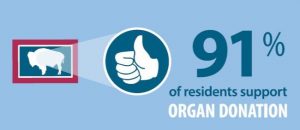
In Wyoming, 91% of residents who participated in our public perception survey said they support organ donation. Often, they do not sign-up because they want to learn more or believe untruths about donation.
- Outreach to Educate
Through outreach, public education and working with community partners, we continue to share the facts about donation and dispel the myths. Pair this outreach with Wyomingites' pride in taking care of their own and it's a successful combination for lifesaving growth!
- 2018 Record DDR
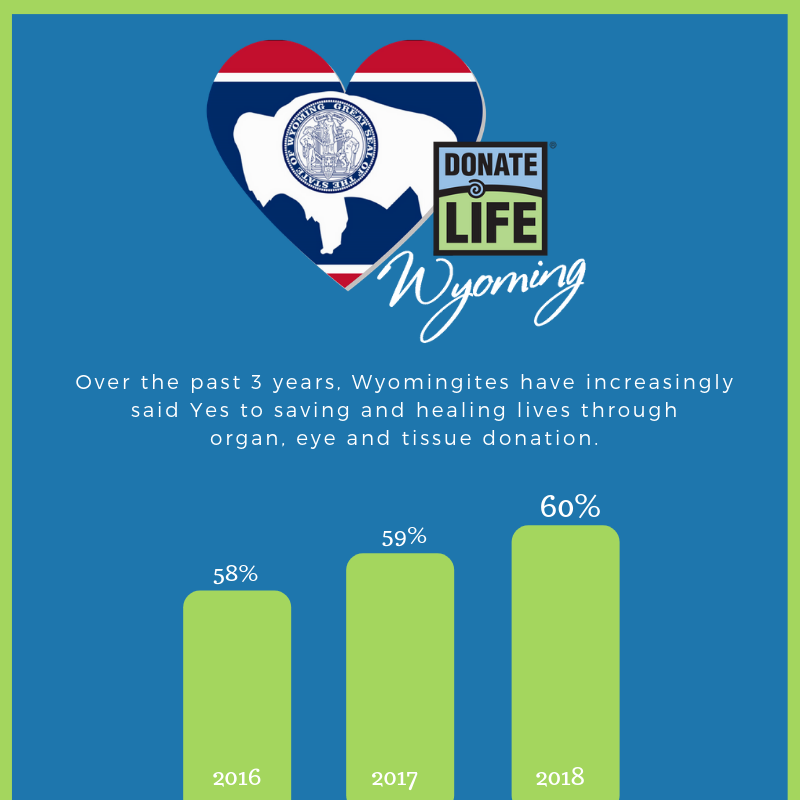
Over the last three years, we have seen an increasing support of organ eye and tissue donation. In December of 2018, Wyoming hit a record-setting monthly donor designation rate of 63%! Growth was evident throughout the year and Wyoming finished 2018 with a 60% DDR! This DDR is well above the national average and places Wyoming in the top ten of all states for high donor designation rates.
As we set our sights on 2019, we will continue to strive to save and heal lives through organ and tissue donation and transplantation in Wyoming. With nearly 150 Wyomingites awaiting a lifesaving organ transplant and thousands more in need of healing cornea and tissue transplants, the increasing DDR gives hope to all.
Remember to check Yes when you obtain and renew your driver license or state ID. Sign up anytime online at DonateLifeWyoming.
Record-Breaking Year for Organ Donation and Another Great Year for Tissue Donation – Colorado & Wyoming
Donor Alliance Breaks Record for Number of Organ Donors
For 2018, Donor Alliance, the federally designated non-profit organization that facilitates organ and tissue donation in Colorado and most of Wyoming, recorded a record-breaking year for organ donation and transplantation, ultimately, saving more lives! Through the generous gifts of donors and their families, Donor Alliance facilitated more transplants than ever by 5.6 percent, exceeding the previous high set in 2013, and a 33 percent increase since 2009.
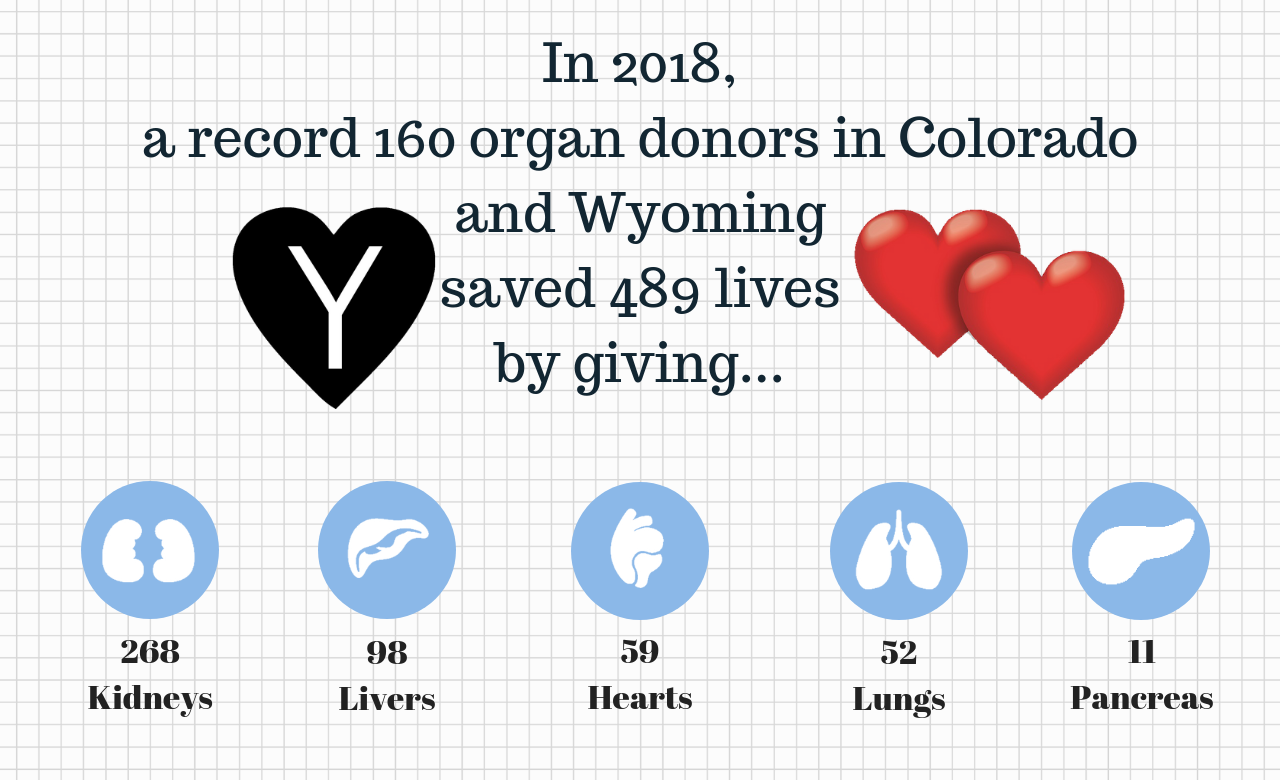
- Organ Donors - a record 160 organ donors
- Organs Transplanted - donations saved the lives of 489 people
- Record year for kidney transplants, 268
- Record year for heart transplants, 59
“We are incredibly proud and grateful to have facilitated a record number of lifesaving organ transplants in 2018,” said Sue Dunn, Donor Alliance president and CEO.
Another Great Year for Tissue Donation
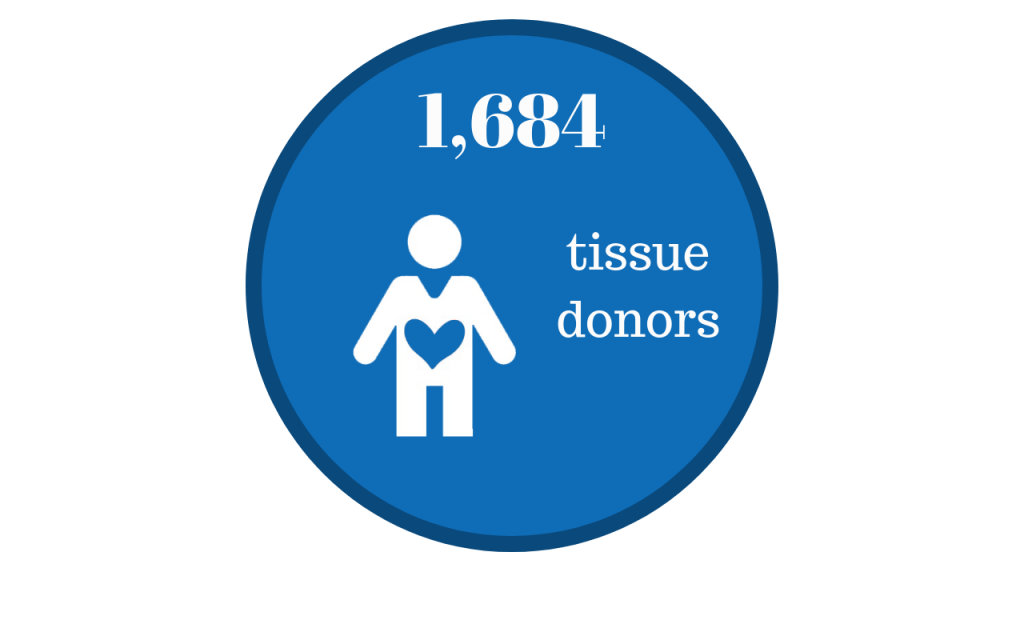
Through procedures such as skin grafting and reconstructive surgeries, these life-saving and healing donations will help thousands of people regain mobility and have active lives after disease or trauma.
- Tissue Donors - an amazing 1,684 tissue donors
- Record year for skin donors, 1,512
“We continue to be inspired by the selfless donors and courageous families who make the powerful decision to give the gift of life."
Annual Snapshot:
| ORGAN Donation | 2013 | 2014 | 2015 | 2016 | 2017 | 2018 |
| Local Organ Donors | 148 | 109 | 134 | 139 | 144 | 160 |
| Kidney Transplants | 241 | 176 | 226 | 233 | 246 | 268 |
| Liver Transplants | 109 | 72 | 79 | 84 | 88 | 98 |
| Heart Transplants | 43 | 37 | 54 | 54 | 43 | 59 |
| Lung Transplants | 45 | 42 | 59 | 44 | 24 | 52 |
| Pancreas Transplants | 24 | 9 | 10 | 8 | 6 | 11 |
| Small Intestine Transplant | 1 | 1 | 0 | 1 | 0 | 1 |
| Local Organs Transplanted | 463 | 337 | 428 | 424 | 407 | 489 |
| TISSUE Donation | 2013 | 2014 | 2015 | 2016 | 2017 | 2018 |
| Local Tissue Donors | 1,177 | 1,590 | 1,674 | 1,710 | 1,752 | 1,684 |
| Bone Donors | 660 | 830 | 911 | 822 | 832 | 902 |
| Skin Donors | 1,076 | 1,386 | 1,401 | 1,320 | 1,503 | 1,512 |
| Heart Valve Donors | 111 | 114 | 117 | 168 | 140 | 95 |
| Joint Restoration Donors | 106 | 112 | 119 | 89 | 97 | 90 |
"Additionally, with more than two-thirds of Colorado and Wyoming residents signing up to join the organ and tissue donor registry, our community’s incredible generosity is once again on display."
More Coloradans & Wyomingites said Yes to Donation!
Colorado has one of the nation’s highest-performing state donor registries with 69% of driver’s license/ID card applicants registering as organ and tissue donors. Wyoming is also amongst the top 10 nationally at 60%.
- More than one million residents signed up to become donors in 2018
- An anticipated 1,058,000 in Colorado and 80,520 names in Wyoming added to the organ and tissue donor registries
- The donor designation rate reached 69.04 percent in Colorado
- The donor designation rate reached a record 60.34 percent in Wyoming
2018 Malcolm Baldrige National Quality Award Winner
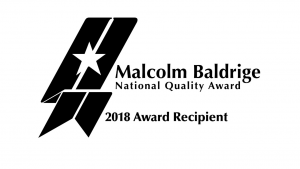
This year also marked the culmination of a near decade-long performance excellence journey for Donor Alliance, with the organization being named a 2018 Malcolm Baldrige National Quality Award winner. The award honors exemplary U.S. organizations and businesses that demonstrate an unceasing drive for radical innovation, thoughtful leadership and administrative improvement. Donor Alliance was recognized for its dedication to continuous improvement and achievements in engagement, organizational effectiveness and sustainability, which are instrumental in the organization’s work to maximize all donation opportunities.
"This support coupled with the expanded use of innovative technologies and dedication to the mission helped save more lives than ever in our region last year.”
Innovative Technologies

As a result of a decade-long performance excellence journey; the organization enacted a number of innovative processes last year that supported the increase in lives saved:
- Facilitation of the first donor under the HOPE Act (meeting HIV+ criteria)
- Implementation of a CT scanner to help maximize the gift of life by allowing a single liver to be transplanted into two donors
Record Year for Transplants Locally
Donor Alliance partnered with the area’s 110 acute care hospitals and four transplant centers to set records in a number of additional areas in 2018, including the coordination of 167 additional transplants from donors outside our region. Additionally, 173 transplants from living organ donors at our area's four transplant centers saved even more lives.
How You Can Help
Despite the marked achievements for donation and transplantation across the region in 2018, 2,000 people in the area continue to wait for a lifesaving transplant. With these patients in mind, Donor Alliance continues to tirelessly educate the public on the need for donation and collaborate closely with hospital and other partners throughout the two-state area. For more information about donation, or to sign up as an organ, eye and tissue donor, please visit DonateLifeColorado.org or DonateLifeWyoming.org.
[embed]https://www.youtube.com/watch?v=ZHB7-olMLiQ[/embed]
Know the Facts: Who Can Be a Donor?
Why Don’t People Sign Up To Be a Donor?
Lack of Knowledge: Many of those that have never considered organ donation or have delayed signing up to become a donor, do so because of inaccurate information or assumptions about organ donation and transplantation.
“I’m Not Healthy Enough”: In both Colorado and Wyoming, someone thinking they are not healthy enough to become a donor at the time of their death is the second most common barrier to signing up to become a donor. Twenty percent of Coloradans and 17 percent of Wyomingites that haven’t signed up to become a donor haven’t registered because they assume they’re not healthy enough, according to independent research that we conducted in 2017.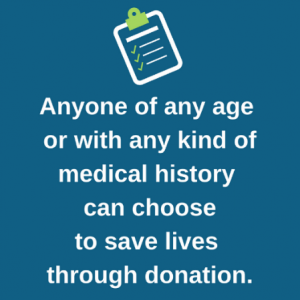
So, Who CAN Be a Donor?
The truth is, ANYONE—regardless of age, lifestyle or medical condition—can sign up to become a donor. Even those with chronic conditions and other health issues can register to give the gift of life. Learn the facts about who can become a donor.
Real, Local Story
[caption id="attachment_18870" align="alignleft" width="300"]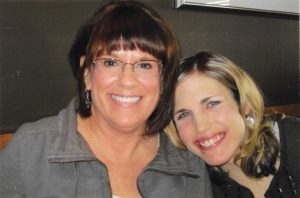 Kate with her mom, Gail[/caption]
Kate with her mom, Gail[/caption]
Kate Gallagher - Monument, CO: Despite her liver disease, Kate was able to save the lives of others through organ donation. Kate was on the waiting list for a liver transplant when she suffered a cerebral hemorrhage on March 12, 2012 and passed away before she could receive a new liver. She was 26-years-old. As an organ donor, she saved three lives that day: one of her kidneys went to a grandfather from western Colorado, the other went to a grandmother and her heart went to a 12-year-old girl who had suffered a heart attack on the basketball court.
Just one donor can save up to eight lives through organ donation and save or heal more than 75 through eye and tissue donation. Interested in becoming a donor after death? Learn more about the process.
Once you’ve made your decision, signing up is easy! Just say Yes each time you obtain or renew a driver license or state ID, or visit our registry websites, www.DonateLifeColorado.org or www.DonateLifeWyoming.org, and click the ‘Become A Donor’ button!
In 2017, we conducted a study examining Colorado and Wyoming residents’ sentiments surrounding organ, eye and tissue donation. We’re sharing some of the results on Donation Essentials to educate the public on the donation process, barriers to registration and what exactly the little heart on your driver license means.
Donate Life Float Wins Judges Award at 130th Rose Parade
Thousands of flowers and volunteers helped create this year’s beautiful Donate Life Rose Parade Float. The judges took note and awarded the float the coveted Judges Award!
Award – Meaning, History
This year the Donate Life Rose Parade Float was awarded the Judges Award for most outstanding design and dramatic impact. This is the third time, since the float’s inception in 2004, that the float has taken home this specific award. The Donate Life Rose Parade Float crew also took home the Judges award in 2008 and 2012. Over the years, the Donate Life Rose Parade Float has taken home a variety of awards: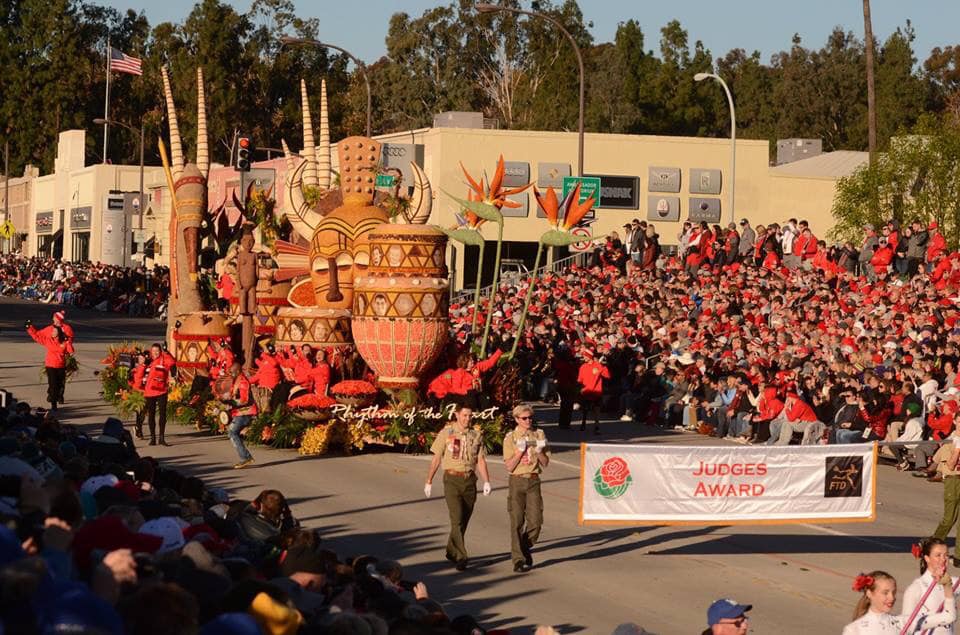
Queen's Trophy - 2009
Theme Award - 2010, 2011, 2014
Isabella Coleman Trophy - 2016
Theme Trophy - 2017
Theme Trophy – 2018
Judges Special Trophy - 2008, 2012, 2019
Donate Life Float – Mission, Meaning, Materials
Award-winning float designer Charles Meier created the float’s beautiful design, and Fiesta Parade Floats produced it.
-Mission: This is the 16th year that the Donate Life Rose Parade Float has participated in the parade with the same mission, to save and heal lives by sharing the gift of life and delivering the message of organ, eye and tissue donation to the world.
-Meaning: Going along with the overall Parade theme of Melody of Life, this year’s float theme was Rhythm of the Heart highlighting the musical diversity and rhythms of Africa.
-Materials: Fresh flowers and other natural materials such as seeds, leaves and bark.
Donate Life Colorado Float Rider: Colleen Reed
The float is accompanied by those that have been impacted by organ, eye and tissue donation. Recipients ride the float, living donors walk alongside and the dozens of memorial “floragraph” portraits are of deceased organ, eye and tissue donors. Every year, Donor Alliance sponsors one person to go represent Donate Life Colorado in the Donate Life Rose Parade Float. This year, Colleen Reed, a liver transplant recipient from Denver, was the sponsored rider! Colleen’s transplant journey began on New Year’s Day, 2016 and came full circle this year at the 130th Rose Parade in Pasadena, Ca.
[gallery ids="18854,18852,18856"]
Visit the Rose Parade website for more information.
To best support the Donate Life Rose Parade Float mission, sign up to be a donor! You can do that by visiting our state registry websites and clicking the ‘Become a Donor’ button: DonateLifeColorado.org or DonateLifeWyoming.org.
